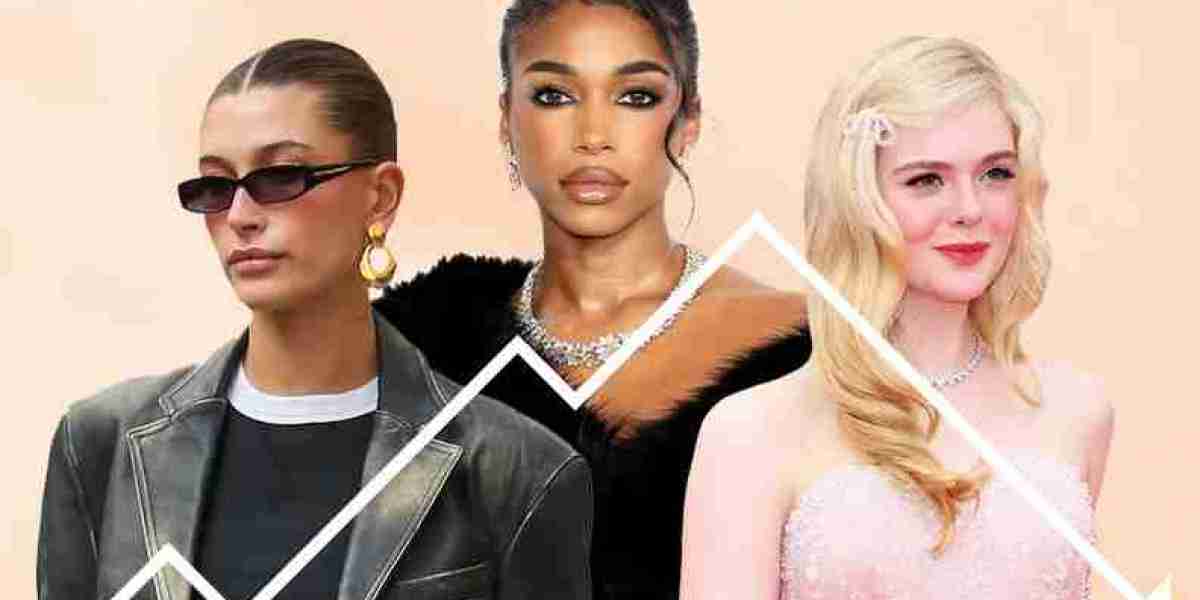Cottagecore, mob wife, coastal cowgirl, coquette, glazed-doughnut nails, strawberry makeup. These are just a few of the viral aesthetics that have taken over social media throughout the last year. For the last few years, it seemed there was a new vibe being introduced every week. At first people loved it, but now, there's been a noticeable shift in the tides. Many who were excitedly riding the Trend Train have requested to get off at the next stop. So, what happened?
Perhaps what felt like the impossible happened: we hit trend fatigue. The thing is, "trends," which are defined by Merriam-Webster Dictionary as a "prevailing tendency or inclination," have been around forever. People often like to refer back to the biggest trends of decades past — hence the fascination and reimagination of '90s makeup and 2000s hairstyles — but recently, it feels as though the cycle of trends is coming and going at an all-time high.
Ahead, we spoke to psychologists to get a better understanding of trend culture. Why are we so obsessed with new and shiny aesthetics, and will we ever hit a point of oversaturation?
How Do Trends Start?
Trends form pretty easily: someone has to propose a new idea, and then enough people have to "follow" it so that it catches widespread attention. "Trends start with something that an individual or small group gives attention to, and then [they] start to build momentum of other people's focus," Scott Lyons, PsyD, psychologist, author, and educator, tells PS. From there, they continue to grow until they've taken over our news cycle and For You Pages.
However, we've seen an uptick in micro trends lately. "While mainstream trends still garner significant attention, there has been a growing emphasis on niche communities and subcultures," says Sanam Hafeez, PsyD, an NYC neuropsychologist and director of Comprehend the Mind. "Online platforms have facilitated the formation of micro-communities centered around specific interests, hobbies, and identities."
The Psychology Behind Trends
You may think that trends catch on solely because they're pretty or new and exciting, and that's certainly part of it. "When we are provided with something new and different that a lot of people are also interested in, then it brings a sense of excitement," says Jenny Yip, PsyD, board-certified clinical psychologist and author of "Hello Baby, Goodbye Intrusive Thoughts." We, as humans, are naturally curious creatures, but the psychology behind them goes even deeper than that. We want to belong and feel connected.
"Participating in trends invites social interaction, admiration, and appreciation from others, and facilitates a sense of belonging for us while also allowing us to fit in with the crowd," Christie Ferrari, PsyD, also known as Dr. C, clinical psychologist and blogger, says. So, the success of trends boils down to a mix of wanting to be included while also wanting to stand out and feel special.
And don't underestimate the power of FOMO in all of this — it's very real. "There's this fear of missing out on something fun or exciting, which can push us to join in on trends even if we're not sure about them," Dr. Hafeez says. "Plus, if something seems rare or hard to get, it makes us want it even more." (This is likely the reasoning behind the sensational Stanley Cup that had teenagers sleeping overnight outside of Target and now, flocking to Target Joe's to get the new mini tote.)
Social Media's Effect on Trend Culture
Trends are as old as time (even if they weren't referred to as such), but the landscape of how they thrive has shifted drastically. These days, the driving force is undeniably digital media in all of its many forms. TikTok, Instagram, and the internet as a whole (along with influencers) have democratized trend culture and made it more accessible.
"With the rise of social media, all of the world is a stage," Dr. Lyons says. Having all of this information at the tips of our fingers is contributing to the increased pace at which we're seeing trends. Before it, you weren't able to connect instantaneously with such a broad group of people. "Back in the day, how did we access trends? Magazines, TV, newspapers. . . you would get one magazine a month," Dr. Yip says. "Information wasn't dispersed as quickly as information is today with the internet."
The Impact of Micro Trends
Trends used to make you feel like you were part of a greater movement. Now, however, micro trends lack the same effect. Social media has allowed countless fads to flourish — more than ever before — but it's also responsible for the shortened lifespan of these aesthetics or vibes. "Once the trend becomes too saturated and viral, it's time for a new trend," Dr. C says. This cycle keeps things feeling exclusive and exciting, but it's also contributing to trend fatigue.
"With the rapid dissemination of information online, trends can become oversaturated and lose their novelty quickly," Dr. Hafeez says. "This phenomenon has accelerated the turnover rate of trends, making it challenging for individuals and brands to keep up."
The sheer number of options available to use — not just with trends but everything else, such as brands, TV shows, and books — has forced content to quickly be replaced. Dr. Yip puts it this way: "In the first 10 minutes of a movie, if I'm not into it, there are thousands of other new movies I can choose from."
Not to mention, collectively, our attention span is shrinking. "We're getting bored much easier than ever before," Dr. Yip says. And new trends are a solution to that boredom. "When you're feeling that sense of new excitement, it's basically your brain producing dopamine," she continues.
So, the question is, will this ever change? "Until it becomes trendy to not be on social media, it's unlikely," Dr. C says.

:upscale()/2024/03/14/872/n/1922153/tmp_aEVCld_888d27a24908ba86_Main_PS24_02_Beauty_TrendCulture_1456x1000.jpg)

